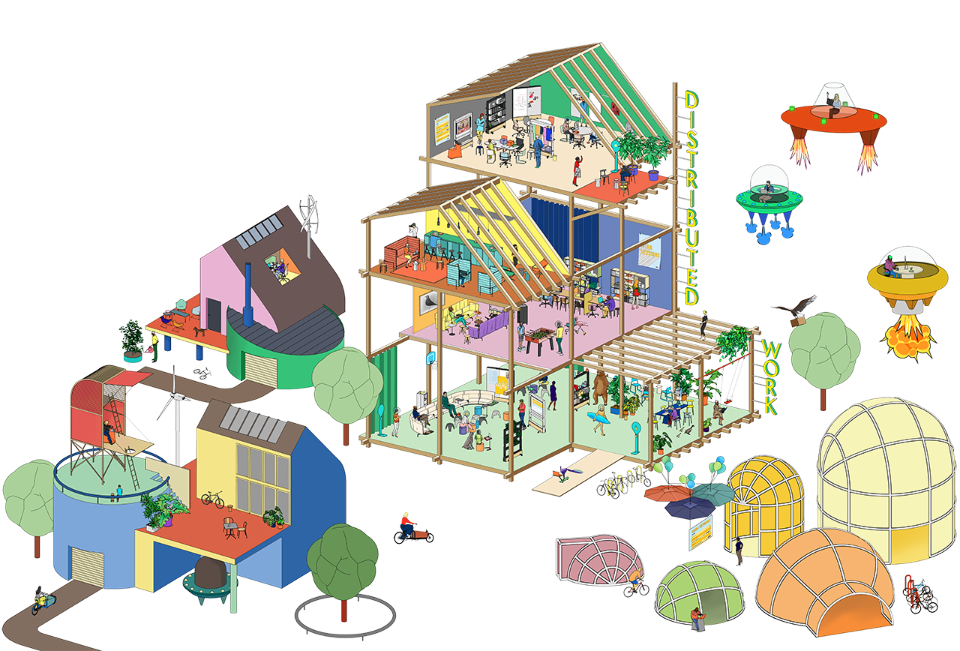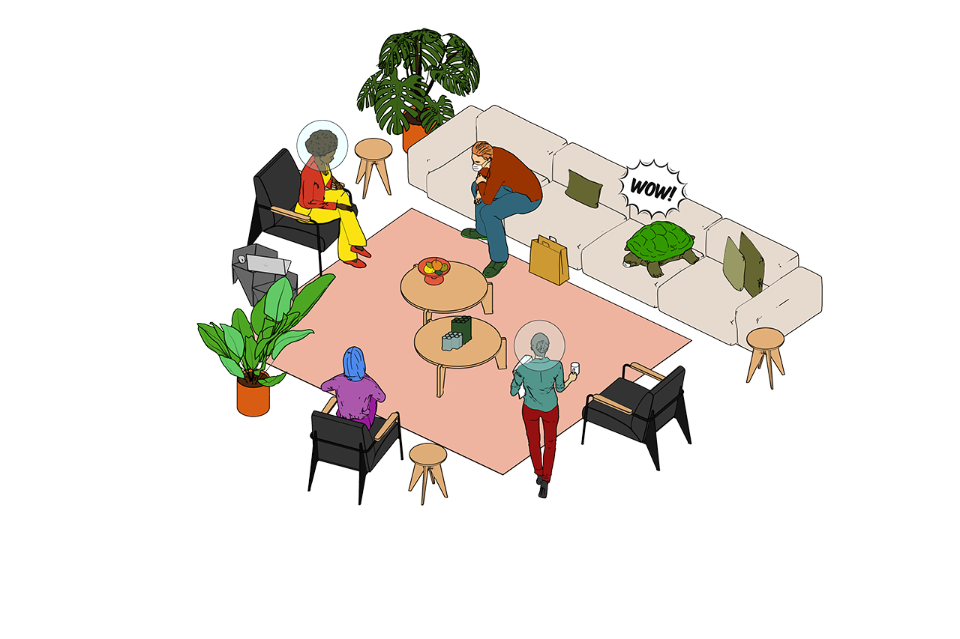It is a curious paradox, but also a farsighted strategic repositioning, that one of Europe’s largest office furniture companies to rethink the future of working life at home. But it is precisely in the light of this short-circuit, and quite apart from all the guidelines on optimal teleworking that now seem all too debated and taken for granted, that the Vitra Sessions’ new digital format, inaugurated by the Weil am Rhein-based company after the launch of the Vitra Summit in October 2020, appears most intriguing after all.
With “Distributed Work”, the theme of this new video conference moves away from the previous philosophical discussions on living at the Vitra Summit to look at the pragmatic lesson inflicted by the Covid-19 pandemic in a totally unexpected way. Through the story of Nora Fehlbaum, CEO of Vitra, flanked by experts and protagonists from the design world, Vitra shares with its followers the experience of a confinement year, confiding not only its initial scepticism about the productivity of telework, but opening up to a broader discussion on how hybrid work is redefining the sense of belonging to the corporate culture, modifying its cohesion and identity.
Having become “the new normal”, the distributed work – carried out both in the office and at home, according to a subjective balance for each company that is still to be stabilised – poses fascinating challenges that go well beyond the need to develop the vertical attitude to supervision into a trust-oriented culture and an individual search for results. The challenge, which in the end is less obvious, seems to revolve around the possibility of recreating an informal interaction among people who work together even when, as Mikael Krogerus & Roman Tschäppeler, authors of “The Decision Book” (2011), tell us the unpredictable sparks of exchange and complicity due to physical presence disappear. How can we recreate an open and spontaneous interaction, in the corridor or around the coffee machine, when a virtual interface stiffens poses and connection times? And how can decision-making processes be oriented when the same interface cancels out dead time, unforeseen deviations from the script and random inputs arising from a case that cannot be predicted?
“Our productivity may remain intact, but our learning, especially that comes from informal and chance encounters, may suffer,” Gianpiero Petriglieri says, Associate Professor of Organisational Behaviour at INSEAD in Paris. It is precisely in this undefined framework, countering the risk of missed serendipity, that, experts warn, the design defining the office layout will become an increasingly strategic component for re-centring and emphasising the company’s identity, making the physical space an even more expressive metaphor, an even denser concentrate of the positioning of the company’s philosophy and human resources policy. And if in these still uncertain times the only thing we have learnt seems to be the irreversibility of change, Vitra and its experts seem to be betting not only on the metabolisation of the current balance established between work at home and in the company, but above all on the idea that the office itself has to rediscover its centrality, not so much and not only to carry out collective work, but to encourage interpersonal dynamics in a space increasingly less oriented towards the personal desk and more and more closer to the model of a lounge or an expanded café used as a hub for teleworking.
“I do not think the office needs to be completely redesigned after the pandemic, but there is an additional need to establish transparency within the company,” Tim Reusch says, international head of Vitra’s Consulting & Planning Studio, the company’s workspace consulting arm. Consequently, Vitra is launching its first Club Office at its Birsfelden headquarters, a new concept that internalises this hybrid mode, creating a flexible, shared space in order to work alone or collectively, but always open to spontaneous interaction, not bound by the focus on work-related topics.
“Talent needs to be set in motion,” Petriglieri recalls. And it is precisely in these new common spaces that the post-pandemic energy seems ready to settle and start circulating again. Aided by a renewed focus on the wellbeing of human capital that should make inclusive and creativity-oriented work more than just a catchy buzzword to be used in a revamped corporate image, according to the experts.
image above: © Vitra, Art Direction: Studio AKFB, Illustration: Atelier CTJM








